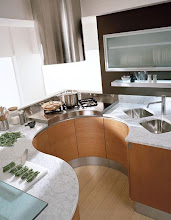Oak? Maple? Stainless? Laminate? When you're considering new kitchen cabinets, one of the biggest decisions is your choice of materials and finish. You may know exactly what you want — maybe you fell in love with the steel cabinets in a friend's gourmet kitchen, or maybe you've been wanting hickory since you saw a picture in a magazine. Or you may be wavering a bit — you know you want French Country, but should it be cherry or maple? We understand. That's why we've put together this reference section on popular materials for today's kitchen cabinets — at all price points. Check out different types of wood, metal and laminate cabinets. Find out which materials work best in different styles and settings, which are good choices if you've got small children, and what hidden issues may catch you unawares — from wood changing color with age to shelves sagging under a load of canned goods. You won't find this information in the glossy brochures, but you'll find it very useful when you're discussing your plans with your building pro, as it helps you narrow your options to the ones that will really work well for you.
from http://www.calfinder.com/library/kitchen/cabinet/material
from http://www.calfinder.com/library/kitchen/cabinet/material




